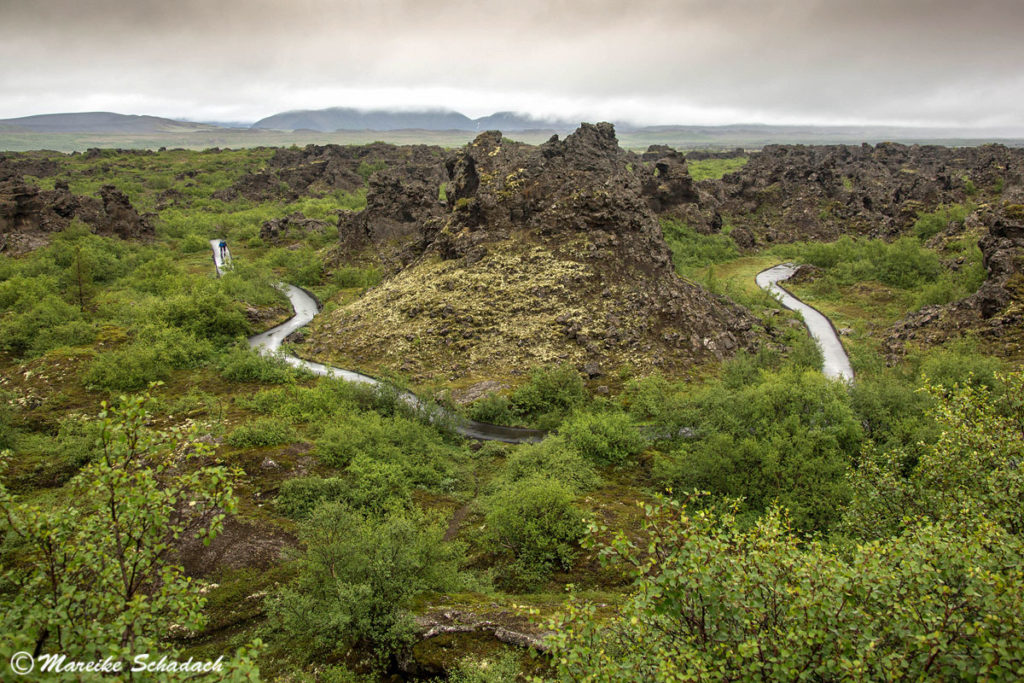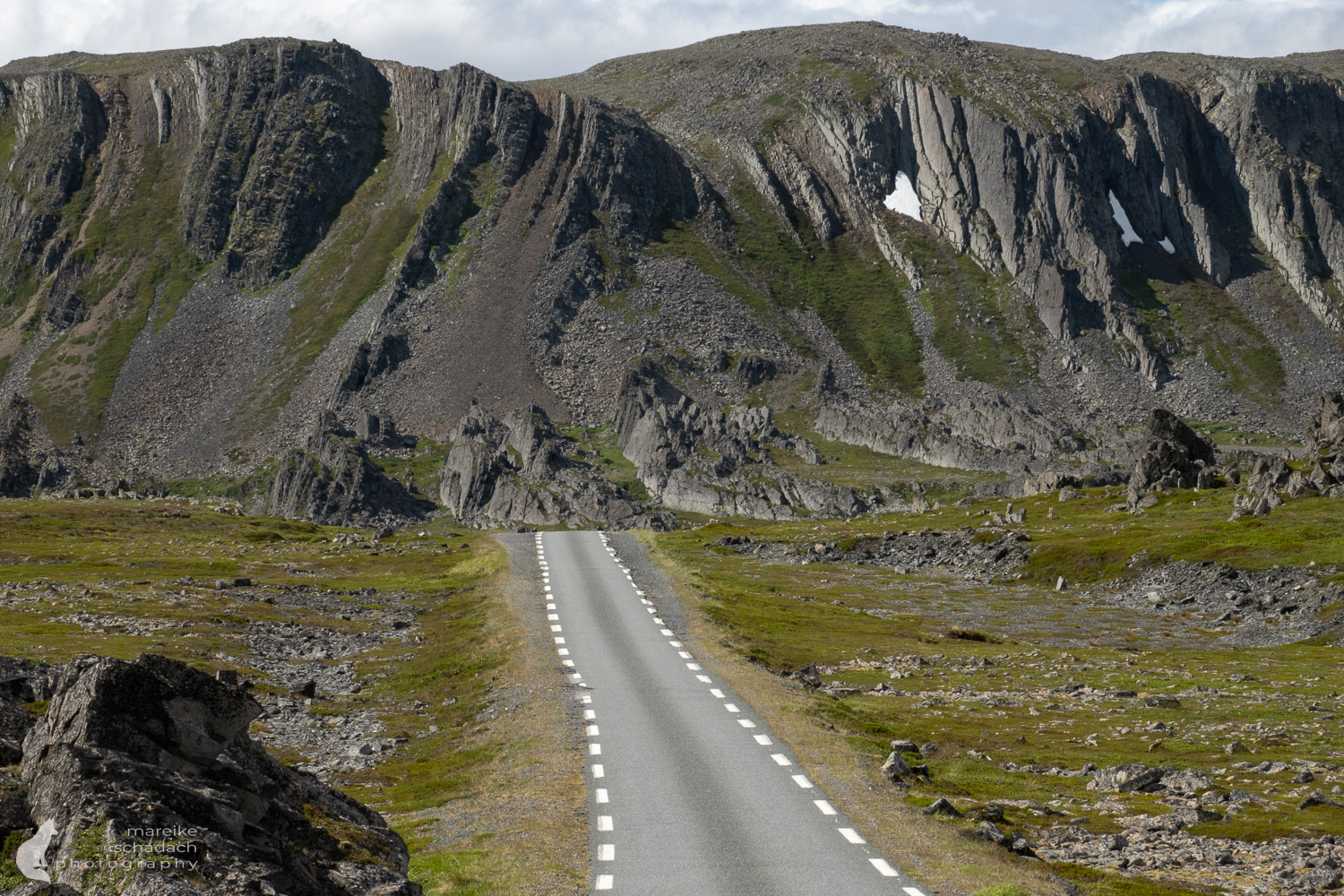Iceland. The Diamond Circle is a circular route in the north of Iceland along some of Iceland's highlights. This leads to approximately 260 kilometers of some of the most beautiful and impressive landscapes, such as the Mývatn lake or volcanic landscapes. Due to its remote location in northeastern Iceland, this route is less touristy and not as crowded as the Golden Circle in the southwest of the country. Learn more about the highlights of the Diamond Circle in my article and get tips for your tour planning.
Unsolicited, unpaid advertising, since names are mentioned.
Highlights of the Diamond Circle include:
- Lake Mývatn
- Waterfall Dettifoss
- Horseshoe-Shaped Gorge Ásbyrgi
- Puffins on the Coast of the Tjörnes Peninsula
- Whale Watching in Húsavík
- Góðafoss Waterfall
Outline map: The Diamond Circle - Islands Highlights in the North
Lake Mývatn
Mývatn is not only known for its billions of mosquitoes, but also for its rich bird life. Many hobby ornithologists come here during the summer months to discover new species for themselves. And also all those who love spectacular volcanic landscapes get their own reward here. Pseudo-craters and surreal lava labyrinths as well as high-temperature areas and a geothermal bath provide variety. There are beautiful hiking routes and many opportunities for bird watching. All details for your visit to Mývatn can be found in my separate article Mývatn - Hiking and Birdwatching at Iceland's Mosquito LakeYou will find informations to:
- Sigurgeir's Bird Museum
- Volcanic landscape Dimmuborgir with spectacular lava formations
- Lava field Vogahraun to the hot fissure Grjótagjá
- The hot springs Hverarönd, one of Iceland's most famous high temperature areas at the foot of the mountain Námafjall.
- Pseudo crater Skútustaðagígar
- Geothermal Bath Mývatn Nature Baths




Waterfall Dettifoss
At 44 meters high and 100 meters wide, the Dettifoss is the mightiest waterfall in Europe. The water flow is 193 cubic meters per second. Furthermore, the spray on the edge of the waterfall is enormous. For this reason, rainwear and protection for the camera is mandatory.
There are two access roads to the Dettifoss. The first is on the eastern shore and the second on the western shore. Depending on the wind direction or your further tour you have to decide on a side. We came from the west side and got pretty wet here.
A little further south of Dettifoss there is still a nice view of the smaller Selfoss. Here the water plunges about 10 m in depth.
Horseshoe-Shaped Gorge Ásbyrgi
According to Norse mythology the canyon Ásbyrgi is made by Sleipnir. The eight-legged horse of the god Óðinn (Odin) stumbled here, leaving a hoofprint. This hoofprit is 3.5 km long and 1.1 km wide.
The area offers great hiking and there is a well-equipped campsite.
Puffins on the Coast of the Tjörnes Peninsula
Well, this stop is not one of the classic stops of the Diamond Circle. But I'd like to share it with you. From a rather inconspicuous parking lot there is a great opportunity to watch puffins in early summer on the coast of the Tjörnes peninsula. They breed here on the rocks and can be easily observed from the rock opposite. You can also see fulmars here. A short stopover is therefore always worthwhile. You can find a small resting place at the following coordinates: 66°09'03.7″N 16°58'06.7″W.
Whale Watching in Húsavík
Húsavík is considered one of the best places for whale watching in Europe. In addition to minke whales and humpback whales, you can also see blue whales and orcas here - but quite rarely. At the harbor, several tour operators offer daily boat trips. The best time is from June to August.
We did a tour with a sailing ship. It was one of the few boats that ran out that day. Most stayed in the harbor because there was too much wind and waves. We have seen minke whales and dolphins. However, I left my camera well packaged in a waterproof backpack because I had to hold on onto the reeling with both hands. Furthermore, I had to focus heavily on not getting seasick.
Tip: against rising seasickness it helps to stay in the middle to the back of the boat. Because here it rocks less. Seek employment. For example, concentrating the horizon on whale fountains is very helpful. However, you should rather refrain from using binoculars.
Góðafoss Waterfall
As the last stop of Iceland's Diamond Circle - the highlights in the north - I would like to show you the Góðafoss. It is one of the largest waterfalls in Iceland and is called the waterfall of the gods. The Góðafoss flows over 30 m wide horseshoe-shaped cliffs and is divided in the middle by rocks.
Have you ever been to northern Iceland yourself? How did you like it and what were your highlights? Do you have any questions about my article or further suggestions? If so, please write me a comment!














